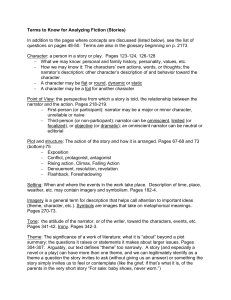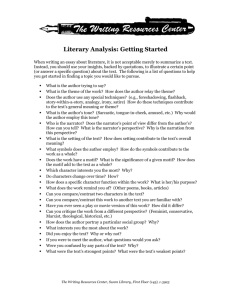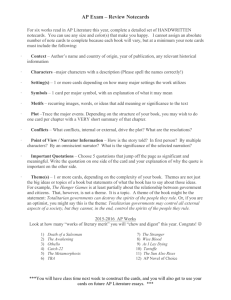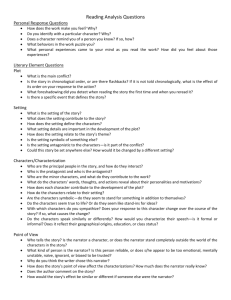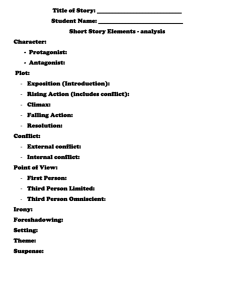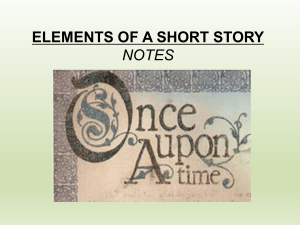Short Stories
advertisement
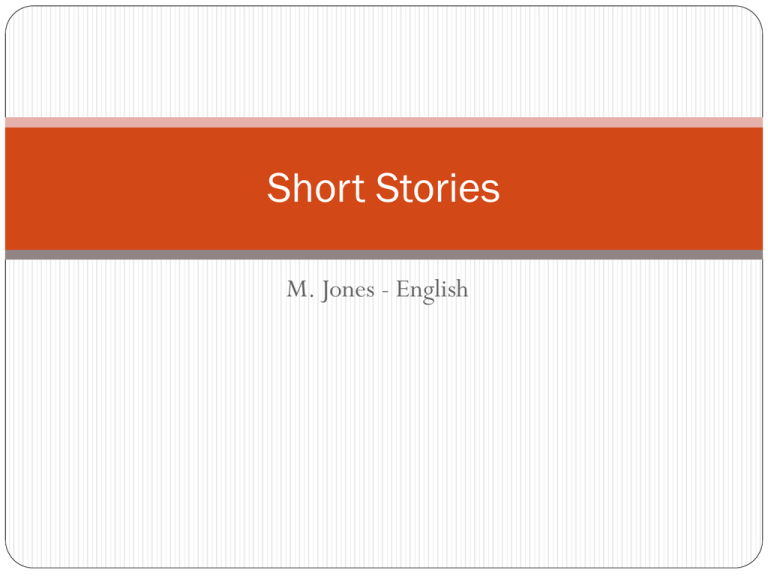
Short Stories M. Jones - English What is a Short Story? Semi-official definition: A work of fiction that can be read in one sitting. Have we read any short stories thus far? Duffy’s Jacket 3 Skeleton Key The Legend of Sleepy Hollow Famous Short Stories A Clean Well-Lighted Place – Ernest Hemingway The Lottery – Shirley Jackson The Last Leaf – O. Henry Araby – James Joyce The Tell-Tale Heart - Edgar Allen Poe Many of the most famous book authors have also written short stories. Elements of a Short Story All short stories have certain characteristics that most novels, books, stories, movies etc have. 1. Characters The story’s “actors.” Could be people or animals. Protagonist: the main character. This person is the one facing the problem. Antagonist: The character or force that conflicts with the protagonist. 2. Plot The chain of related events that take place in a story. “What happens in the story!” What is a Basic Situation? What is Rising Action? What is the Climax? What is a Resolution? Conflict A struggle between 2 opposing forces. External Conflict: Man vs. Man Man vs. Nature Man vs. obstacle or society Internal Conflict: Man vs. Himself 4. Theme The idea about human life and human nature that gives meaning to the story. The central message. What is it that this author is trying to say?? Characteristics of a Theme? A theme must be stated in at least one complete sentence. A theme must be expressed as a generalization about life or human nature. Should explain the whole story, not just parts of it. A theme is not the same as a moral. How to determine a Theme? Ask how the protagonist has changed during the story. Think about the story’s title or statements in the story that point to the writer’s view of the world or human nature. You will have to think about the Theme! The writer usually does not come out and say it. 5. Point of View The vantage point from which the story is told. Who’s telling it?? 1st Person: Narrator is a character in the story Uses first-person pronouns “I, me, my, we us, our” Knows thoughts feelings of one character, speaks directly to the reader Point of View 3rd Person Limited: Narrator does not participate in action of story Does not refer to themselves Knows the thoughts and feelings of ONE characters 3rd Person Omniscient: Narrator doesn’t participate at all. Narrator does not refer to themselves. Narrator knows thoughts and feelings of all characters.

